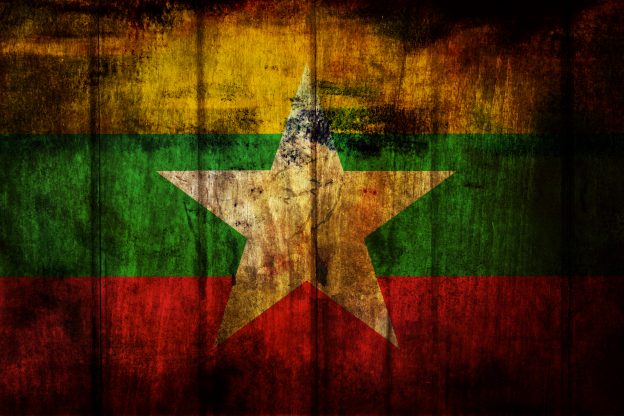- Rohingya activists and local media reports say that civilians have been targeted by the Arakan Army in Maungdaw, a town close to the border with Bangladesh.
NAYPYIDAW,Myanmar. August 07/The Diplomat/ — New reports are emerging of atrocities against Rohingya civilians in western Myanmar, as a powerful ethnic armed group approaches the town of Maungdaw in Rakhine State.
Rohingya activists and local media outlets say that an unknown number of Muslim Rohingya civilians have been killed by the Arakan Army (AA) in recent days, as it has extended its control over the mainly Rohingya town close to the country’s border with Bangladesh.
Wai Wai Nu, a well-known Rohingya activist based at the UC Berkeley School of Law’s Human Rights Center, posted on X yesterday that the situation in Maungdaw had evolved into “a deadly catastrophe” and that the town’s Rohingya population had fallen victim to “escalating atrocities.”
Citing local community sources, she said that the Rohingya had been “entirely expelled from the downtown” of Maungdaw and were now trapped along the Naf River, which forms the township’s long border with Bangladesh. She reported that “over a hundred” Rohingya had been killed, and that AA drone strikes near the Naf injured many others. She said that Rohingya were also being killed in the crossfire of the battle between the AA and the remaining Myanmar military forces in and around the town.

Another Rohingya journalist claimed that the AA “killed more than 200 [Rohingya]” in Maungdaw yesterday, and that “thousands” were on their way to cross the Naf River into Bangladesh. His post on X was accompanied by a video appearing to show dead bodies strewn along the ground.
The AA is the armed wing of the United League of Arakan, an ethnic Rakhine organization fighting to establish an independent Rakhine polity in western Myanmar. The AA has made significant gains in Rakhine State since the collapse of a ceasefire with the military junta in November, and now reportedly exercises primary control over more than half of the state’s 17 townships. The AA has been battling for control of Maungdaw for several months, after overrunning the neighboring township of Buthidaung in May. On August 2, The Irrawaddy reported that the AA was concentrating its fire on the last junta battalion defending the town. On the 5th, Narinjara News reported that AA soldiers were reported to have entered the town, where they were engaging in gunfights with the military. The report also stated that the AA was attacking fleeing junta soldiers with drones, while the Myanmar Air Force responded with air strikes.
According to a report in Arakan Express News, the AA has been “in control” of Maungdaw since early yesterday morning. (The AA has not yet announced the seizure of the town.) It, too, stated that “at least 150 Rohingya civilians were killed and over 500 were injured” during the battle for the town, and that the AA “has dropped drone bombs and sank the boats of Rohingya civilians trying to cross towards Bangladesh.” The AFP news agency reported that a boat carrying 29 Rohingya civilians sank in the Naf River yesterday, resulting in at least 10 drownings, but did not state what caused the sinking.
These local reports are unconfirmed and preliminary and vary considerably in terms of their details and the number of casualties claimed. While it may be some time before more details emerge, the reports are worrying in light of the more substantiated atrocities that have taken place in Rakhine State in recent months.
In May, after the AA captured Buthidaung, arson attacks reduced large parts of the town to ash, forcing tens of thousands to flee. Rohingya eyewitnesses claimed that the AA was responsible for the attacks; the group denied it, blaming junta air and artillery strikes. It also accused Rohingya militant groups of collaborating with the regime, which has also forcibly conscripted a large number of Rohingya and deployed them against the AA in Rakhine State.
However, the most thorough independent assessments seem to point to AA responsibility for most of the arson in Buthidaung. According to analysis by the Australian Strategic Policy Institute, the AA carried out these attacks in retaliation for earlier arson attacks by the military junta and Rohingya militants on the town’s Buddhist- and Hindu-majority neighborhoods.
In June, the AA announced that it was on the verge of capturing Maungdaw, and “urgently” called on all of its residents to evacuate. Given the events of the previous month, some reasonably interpreted this as a warning that it would treat any civilians remaining as legitimate targets.
It is clear that the Myanmar military has an underlying responsibility for the situation facing the Rohingya. Most of those trapped in and around Maungdaw were survivors of the genocidal “clearance operation” launched by the Myanmar military in August 2017, which ended up driving more than 740,000 Rohingya civilians across the border into Bangladesh and wiped dozens of Rohingya villages off the map.
Now, facing the AA’s onslaught, it has sought to harness the lingering sectarian bitterness in Rakhine State in order to advance its own goals, partnering with Rohingya militant groups and conscripting Rohingya civilians – some of the very same people it sought to ethnically cleanse in 2017 – to fight the AA.
The Irrawaddy reported on August 2 that “Muslim militia groups such as the Arakan Rohingya Salvation Army and Rohingya Solidarity Organization, as well as Muslim forced conscripts, are fighting alongside the regime” in Maungdaw. In her posts on X yesterday, Wai Wai Nu stated that the junta is “reportedly collaborating with armed groups,” which she said “falsely claim their #Rohingya representation.” These groups were also “blocking Rohingya civilians from possible escape routes from #Maungdaw,” she added.
However we weigh the responsibility for the situation currently facing the Rohingya, there is nowhere really for these people to go. The most accessible route is across the Naf River into Bangladesh, over which nearly three-quarters of a million Rohingya fled after the military’s “clearance operation” in 2017. By all accounts, this is the route that many are now seeking to take, given the hostility they face from the various political factions within Myanmar. As things stand, the AA’s treatment of the Rohingya of Buthidaung and Maungdaw will form a large black asterisk next to the progress of the Spring Revolution.






